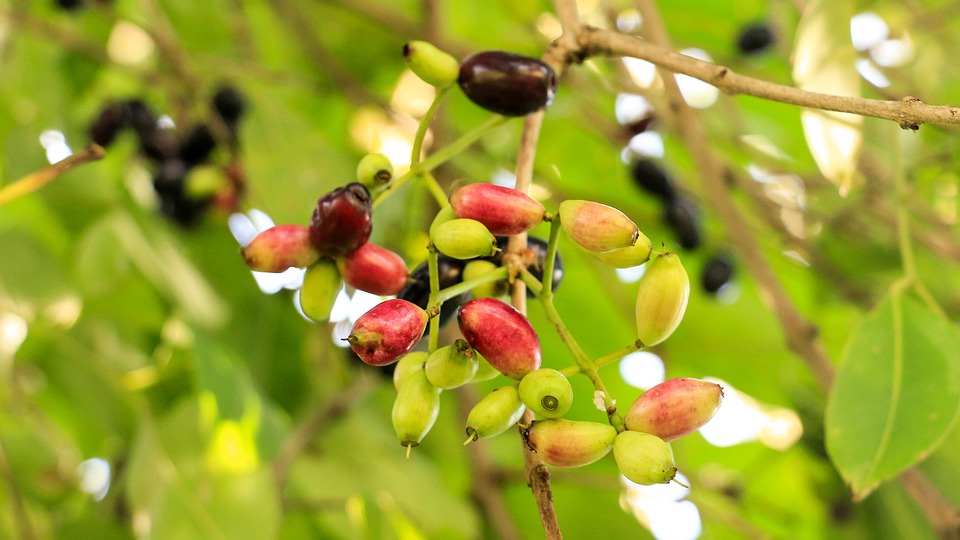Jambolan, also known as the Java plum or black plum, is an evergreen tropical tree in the flowering plant family Myrtaceae. It is native to the Indian Subcontinent, adjoining regions of Southeast Asia, China and Queensland. Take a look below for 23 more interesting and fascinating facts about Jambolan.
1. The name of the fruit is sometimes mistranslated as blackberry, which is a different fruit in a completely unrelated family.
2. Jambolan has been spread overseas from Indian emigrants and is common to see in former tropical British colonies.
3. The jambolan tree was introduced in Florida in 1911 by the USDA, and is also commonly grown in Suriname, Guyana and Trinidad and Tobago.
4. In Brazil, where jambolan was introduced from India during the Portuguese rule, it has dispersed spontaneously in the wild in some places.
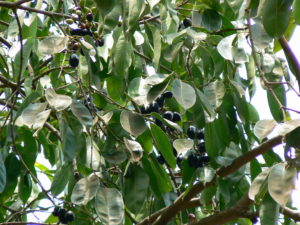
5. Jambolan is considered invasive in Hawaii.
6. Jambolan is sometimes referred to as Portuguese plum and Malabar plum.
7. Jambolan is a slow growing species, but it can reach heights of up to 30 meters and can live more than 100 years.
8. It has dense foliage that provides shade and is grown just for its ornamental value.
9. At the base of the jambolan tree, the bark is rough and dark grey, becoming lighter grey and smoother the higher up you go. The wood is also water resistant.
10. Because the jambolan wood is water resistant, it’s often used in railway sleepers and to install motors in wells.
11. Jambolan wood is sometimes used to make cheap furniture and village dwellings, but it’s relatively hard to work on.
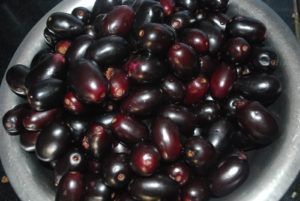
12. The leaves of the jambolan tree have an aroma similar to turpentine, are pinkish when young, changing to a leathery, glossy dark green with a yellow midrib as they mature.
13. Jambolan trees start flowering from March to April. The flowers are fragrant and small, about 5 millimeters in diameter.
14. Jambolan develop by May or June and resemble big berries. The fruit is oblong and ovoid. When unripe, it’s green in color but, as it matures, the color changes to pink, then to shining crimson red and then black.
15. There is a variant of the jambolan tree that produces a white colored fruit.
16. Jambolan has a combination of sweet, mildly sour and astringent flavor. The fruit also tends to color the tongue purple.
17. In Indian mythology, it’s said that jambolan fruit was revered by Buddha.
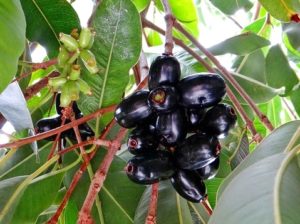
18. Lord Krishna is known to have four symbols of the jambolan fruit on his right foot, as mentioned in the Srimad Bhagavatam commentary.
19. The seed of the jambolan fruit is used in various alternative healing systems like Ayurveda, to control diabetes, Unani and Chinese medicine for digestive problems.
20. Jambolan is packed with vitamin A and vitamin C.
21. The 1889 book ” The Useful Native Plants of Australia” records that jambolan was called “Durobbi” by Indigenous Australians.
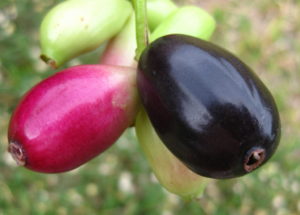
22. Hindus use a sizable branch of the jambolan tree to inaugurate the beginning of marriage preparations and plant it in a place where a pandal will be erected.
23. Bears are very fond of jambolan in the wild.

